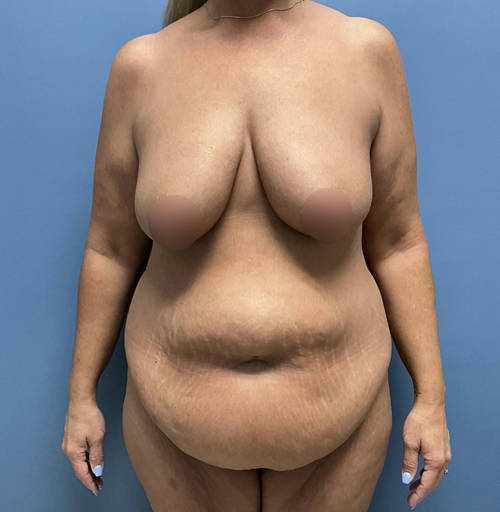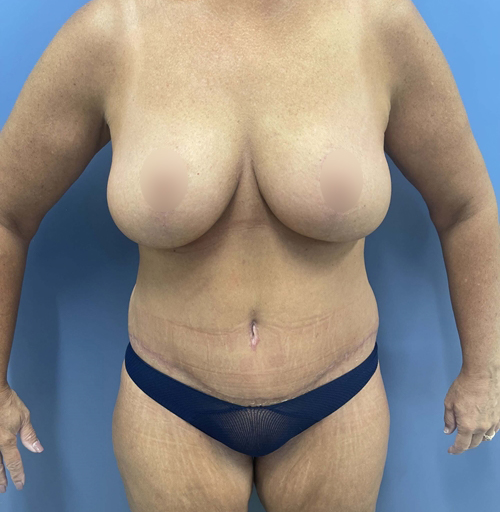Dr. Glenn Lyle, a board-certified plastic surgeon in Raleigh, NC. says a common question he hears from his patients after a tummy tuck (abdominoplasty) is, “When can I start exercising again?” It’s a great question because staying active is important for your overall health and maintaining your results after surgery.
If you search the Internet to find out when you can start exercising after abdominoplasty, you will find answers that vary significantly. Each patient is an individual, and each surgeon has their own guidelines. Unfortunately, there is no science or studies that prove the safety of a variety of exercise types after any surgery.
The truth is, every patient is unique, and there’s no one-size-fits-all timeline for returning to physical activity. Your body will heal at its own pace, and dr Lyle’s exercise recommendations will be based on how you’re progressing in your recovery. However, he can give you some general guidelines to help you plan your return to exercise safely.
Timeline for Returning to Exercise after Abdominoplasty (Tummy Tuck)
– Early Recovery Phase (Weeks 1-2)
In the first week after surgery, rest is essential but not necessarily bed rest. You must be up and around to help prevent blood clots and start your recovery but you will be spending more time than normal in bed, on the couch or in a recliner. However, Dr. Lyle encourages light activity as soon as you feel comfortable. Start with gentle walking around your home to promote circulation and reduce the risk of blood clots. Keep it minimal-just short walks to the bathroom or kitchen or around the house. If you have stairs, you probably won’t be using them much, or if you do, you will be moving slowly.
By the end of the second week, you should be up and around and walking a bit more. Think of it as gentle movement rather than structured exercise. This phase is all about letting your body start the healing process. Just don’t push yourself too hard. You might feel comfortable walking outside and even being able to drive by the end of the second week.
– Gradual Movement (Weeks 3-4)
At this stage, you can start increasing your outdoor walks. Begin with short, flat routes and gradually build up to longer distances as tolerated. Remember, wearing your compression garment during activity is important to reduce swelling and support the healing tissues.
You can also introduce light arm weights (like dumbbells) during this phase. Dr. Lyle often tells his patients, “Keeping the upper body engaged with light weights is a great way to maintain tone without stressing the healing abdomen.”
– Light Exercise Return (Weeks 5-6)
By weeks 5 to 6, many patients might ready to return to the gym for light workouts. This could include:
- Stationary cycling
- Low-impact aerobics
- Light yoga or Pilates (focusing on flexibility rather than core engagement)
- Light upper body weightlifting
At this stage, avoid core-intensive movements like full sit-ups. Instead, gentle planks and isometric exercises (where you tighten your muscles without movement) can be a safe way to start reactivating your core.
– More Intense Activities (Weeks 7-12)
As you continue to heal, you can gradually reintroduce activities such as:
- Jogging or running (start slow and short)
- Swimming (once your incisions are fully healed)
- Higher impact aerobics
- Yoga flows with more dynamic movements
By week 12, you can often return to more challenging abdominal exercises. However, if you had significant muscle repair (like a diastasis recti correction), it’s still wise to avoid full sit-ups. Instead, focus on modified crunches, planks, and squats.
– Weightlifting and Intense Core Workouts (After 3 Months)
By the three-month mark, most patients can safely return to more intense activities, including:
- Heavier weightlifting
- High-impact aerobics
- Core-focused exercises
That said, listen to your body. As Dr. Glenn Lyle often reminds his patients, “If you experience discomfort during a workout, back off and try again later. Healing isn’t a race-it’s a process.”

Meet Dr. Glenn Lyle
Board Certified Plastic Surgeon
Dr. Glenn Lyle, a board-certified plastic surgeon, has been proudly serving the Raleigh, NC, community at Lyle Plastic Surgery and Aesthetics Center since 2002. With a deep passion for helping patients reclaim their confidence, Dr. Lyle specializes in transformative breast surgery and body contouring procedures. Whether addressing the effects of weight loss, pregnancy, or aging, his expert care and artistic approach empower individuals to look and feel their best. Dr. Lyle is dedicated to creating beautiful, natural results that reflect each patient’s personal journey and goals.
Key Tips for a Safe Recovery:
Wear Your Compression Garment: It reduces swelling and supports healing tissues.
- Lymphatic Massage: This can be extremely helpful for swelling reduction.
- Hydrate and Eat Well: Proper nutrition aids healing.
- Listen to Your Body: Discomfort is a sign to slow down.
- Communicate with Your Surgeon: If you’re unsure about an activity, give us a call!
Staying Fit While Healing
If you’re eager to maintain your fitness while recovering, focus on activities that don’t strain your core, such as:
- Seated upper body exercises
- Walking
- Gentle cycling
When Can I Go Back to the Gym after a Tummy Tuck?
Dr. Lyle recommends walking as the first form of exercise, starting just walking around the house in the first week and starting to walk outside after a week or so. Light arm weights like dumbbells can be used to keep the upper body tone, followed by isometrics (tightening your muscles without doing any movement) for the abdomen and squats.
Dr. Lyle recommends restricting your exercises to the home for the first 4 weeks and then venturing out to the gym to do light workouts at 6 weeks. Wear your compression garment while exercising and prepare for some swelling after a workout. Lymphatic massage is very helpful too.
Avoid a full sit-up until about 3 months – especially with a major diastasis repair but smaller crunches and planks are ok after 6 weeks.
Of course, if things are uncomfortable – back off a bit and gradually add these exercises. Squats in proper form are great for abdominal tone.
The most important is to discuss this with your plastic surgeon, as everyone has different circumstances and heals at an individual pace.
Real Patient Result - Back to the Gym in 6 weeks
This 41-year-old woman had lost 80 pounds after childbearing and did it by working out and watching her diet. She was frustrated as her loose abdominal skin was not improving. Dr. Lyle did a tummy tuck and within 6 weeks, she was in the gym for light workouts and in the photo above – is about 4 months post-op and back to full weights with some abdominal work thrown in.
FAQs About Exercise After a Tummy Tuck
When can I return to outdoor running?
You can generally return to gentle running around week 8, but start slow and monitor your body’s response.
Can I swim during recovery?
Swimming can be resumed once all incisions are fully healed, typically around week 6 to 10.
How long should I wear my compression garment during exercise?
Wear your compression garment for at least the first 6-8 weeks, especially during physical activity. Many patients tell me that they feel more comfortable with compression for 3 months and beyond.
Is it safe to do squats and lunges after a tummy tuck?
Squats and lunges can be introduced around week 6 if performed with proper form to avoid core strain.
When can I return to weightlifting?
Light upper body weightlifting can resume around week 4, while heavier lifting may need to wait until week 12.
Can I practice yoga or Pilates after my surgery?
Gentle yoga and Pilates can start around week 5, but avoid deep core engagement until cleared by your surgeon.
Will exercise cause swelling after surgery?
Mild swelling after exercise is normal and can be managed by wearing your compression garment and staying hydrated.
Should I avoid core exercises completely?
Avoid core-intensive movements for the first 6-8 weeks, then gradually reintroduce modified core work. Standing doing light arm curls or isometrics and squats engages the core without the flexion required for more intensive workouts.
Can I ride a bike during recovery?
Stationary cycling can begin around week 5, while outdoor cycling may need to wait a few weeks longer.
How can I stay fit without stressing my healing abdomen?
Focus on walking, seated upper body exercises, and gentle movements that don’t strain your core.
Final Words
Remember, staying patient and giving your body the time it needs to heal properly will pay off in the long run. Dr Lyle is here to guide you every step of the way, so don’t hesitate to reach out if you have questions about your recovery.
If you’re considering a tummy tuck in Raleigh, NC, and want personalized advice about your recovery and results, Dr. Lyle would be happy to meet with you for a consultation. Let’s work together to help you achieve your best results-safely and beautifully.
Next Steps
If you’re considering a tummy tuck surgery in Raleigh, NC, and want personalized advice about your suitability, recovery, risks and results, I’d be happy to meet with you for a consultation. Let’s work together to help you achieve your best results-safely and beautifully.
To book a consultation please fill in the contact form or phone the office on (919) 307-8585.
Further Reading
- Read more about Tummy Tuck Surgery (Abdominoplasty) in Raleigh, NC
- Read more Dr Glenn Lyle’s Blog on When Can I Start Doing Squats After Tummy Tuck Surgery?
- Read more Dr Glenn Lyle’s Blog on What is the Ideal BMI for Tummy Tuck Surgery?
- Read more Dr Glenn Lyle’s Blog on What is a Reverse Tummy Tuck and Who Needs One?
- Read more Dr Glenn Lyle’s Blog on Higher Risk Abdominoplasty in Raleigh, NC
- Read more Dr Glenn Lyle’s Blog on Are Tummy Tucks Safe? A Plastic Surgeon’s Perspective
- Read more Dr Glenn Lyle’s Blog on What is a Fleur De Lis Abdominoplasty and Who Needs One?





